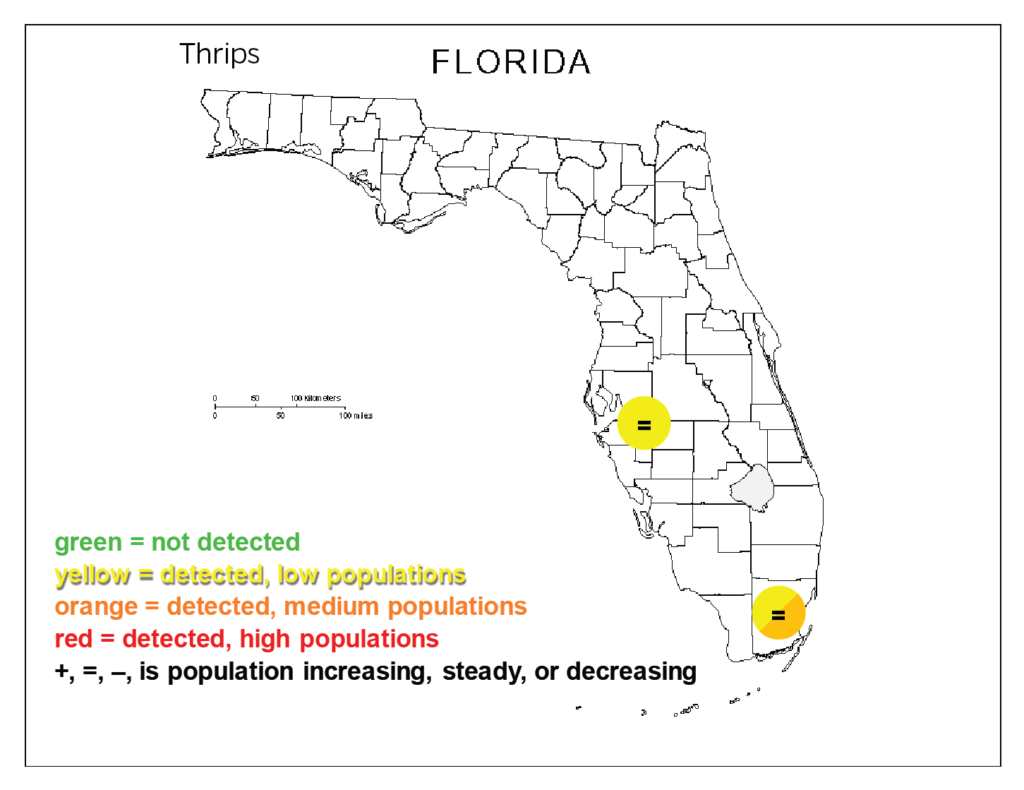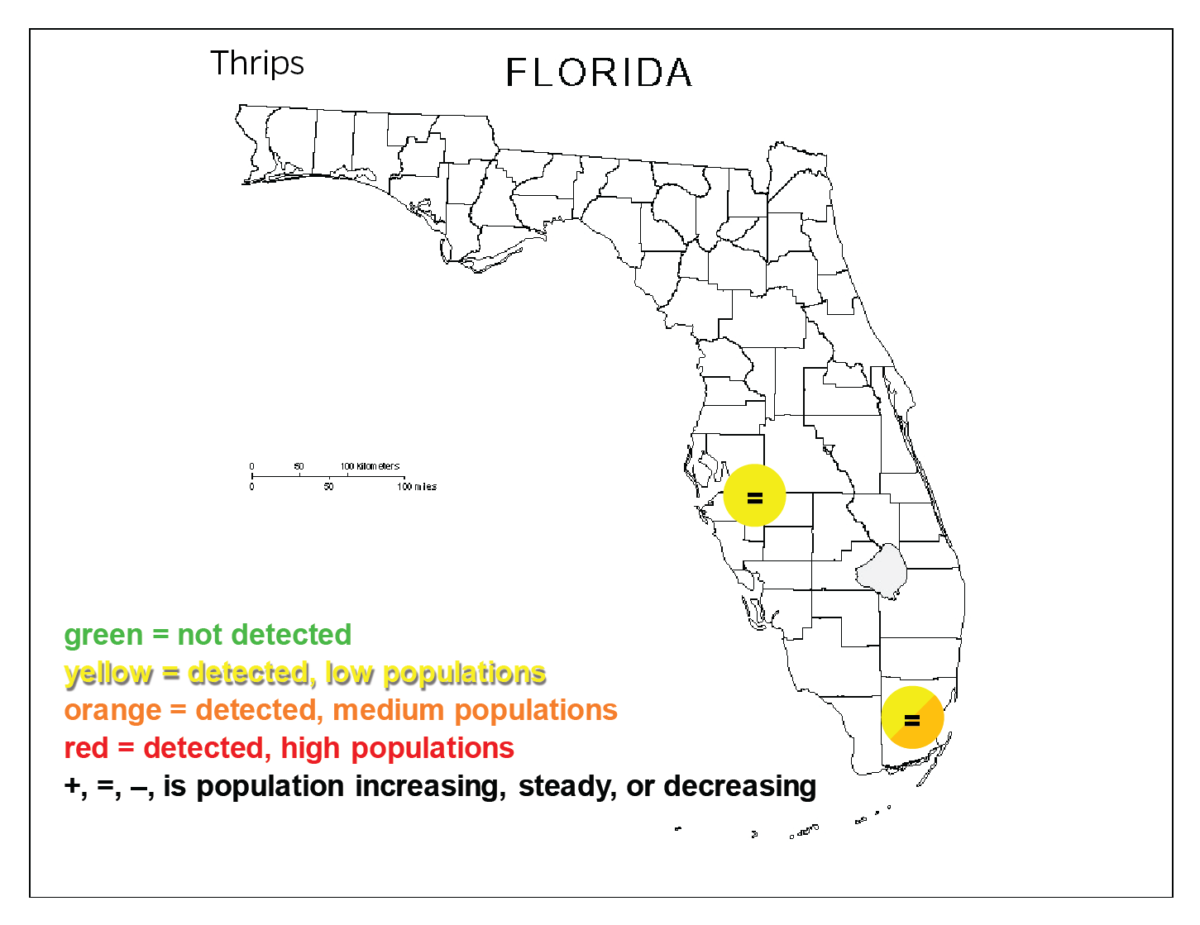Thrips pressure is low across central and southern Florida, according to the South Florida Pest and Disease Hotline.

Scouts are observing low numbers in pepper in central Florida, with thrips only found in the bloom.
Dak Seal, a University of Florida Institute of Food and Agricultural Sciences entomologist at the Tropical Research and Education Center in Homestead, Florida, reports low to moderate levels of melon thrips in bean, squash and pepper.
Asian Bean Thrips are very low in bean, squash, eggplant and pepper.
UF/IFAS cautions producers that if they encounter thrips, they should follow these recommendations:
Cultural practices can be effective in reducing thrips. Reflective plastic mulch on field margins can help repel the virus carrying thrips. Growers should avoid planting tomato within 1,000 feet of an ornamental nursery, since ornamental plants are hosts to flower thrips. Planting a non-host crop as a barrier can help reduce flower thrips infestation on vegetable crops.
Do not use insecticides unless you are sure about pest status of the thrips on your crop. Get your thrips identified by an Extension agent, researcher or scout. Some thrips can be harmless or even beneficial.
Scout fields regularly to confirm infestation level. Growers should use softer products to reduce impact on beneficials if thrips populations are below threshold levels.
Radiant SC (spinetoram) is an effective thrips management tool, with Exirel (cyantraniliprole), Torac (tolfenpyrad), Assail (acetamiprid) and Sivanto Prime (flupyradifurone) serving as rotational partners.










